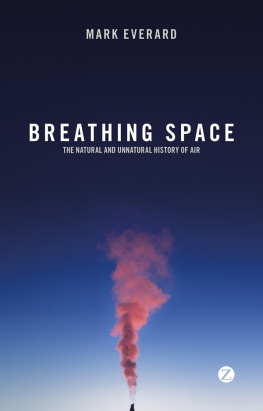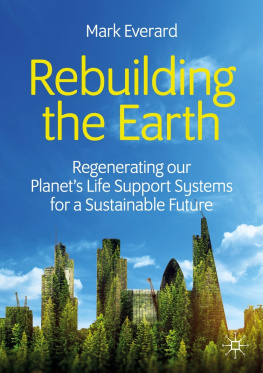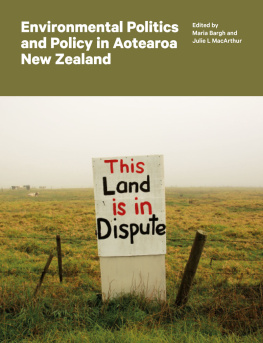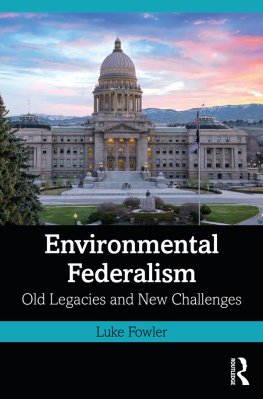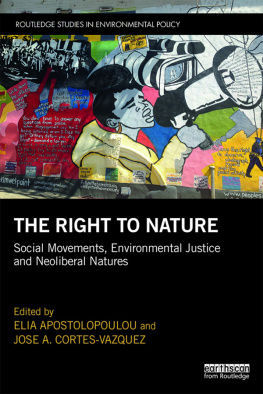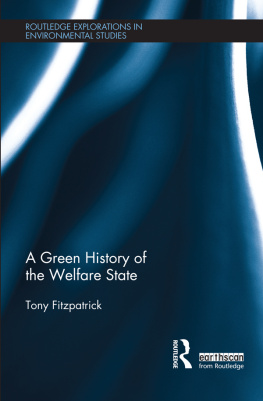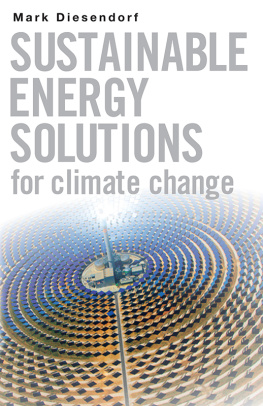
About the author
Dr Mark Everards work in all four sectors of society private, public, academic and voluntary has taken him across five continents to undertake applied research, policy development and capacity-building relating to the ways in which people connect with ecosystems. The author of 14 other books, including Common Ground (Zed Books, 2011) and The Hydropolitics of Dams (Zed Books, 2013), over 60 peer-reviewed scientific papers and over 250 technical magazine articles, Mark is also a communicator on sustainability and wider environmental and resource use matters on TV and radio. He has served on numerous government advisory and expert groups in the UK, as well as advising other governments and multinational corporations on sustainability matters. His speciality is systemic thinking, particularly around connections between the water environment and other environmental media and the human activities that depend on and influence them. Marks work includes environmental ethics and economics as a means to bring our intimate interdependencies with ecosystems into the mainstream of public awareness and government thinking.
Breathing space
The natural and unnatural history of air
MARK EVERARD

Zed Books
LONDON
Breathing Space: The natural and unnatural history of air was first published in 2015 by Zed Books Ltd, 7 Cynthia Street, London N 1 9 JF , UK
This ebook edition was first published in 2015
www.zedbooks.co.uk
Copyright Mark Everard 2015
The right of Mark Everard to be identified as the author of this work has been asserted by him in accordance with the Copyright, Designs and Patents Act, 1988
Set in Arnhem Pro Blond and Futura by Ewan Smith, London
Index:
Cover designed by www.roguefour.co.uk
Cover image Getty/alexihobbs
All rights reserved. No part of this publication may be reproduced, stored in a retrieval system or transmitted in any form or by any means, electronic, mechanical, photocopying or otherwise, without the prior permission of Zed Books Ltd.
A catalogue record for this book is available from the British Library
ISBN 978-1-78360-385-5 hb
ISBN 978-1-78360-384-8 pb
ISBN 978-1-78360-386-2 pdf
ISBN 978-1-78360-387-9 epub
ISBN 978-1-78360-388-6 mobi
Contents
Acknowledgements
The author would like to thank his colleagues at the University of the West of England Ben Pontin, Tom Appleby, Chad Staddon, Enda Hayes, Jo Barnes and Jim Longhurst with whom he worked to co-produce the paper Air as a common good, published in 2013 in the scientific journal Environmental Science and Policy (volume 33, pp. 35468). He would also like to thank his long-suffering family, Jackie and Daisy!
Introduction
The air and the atmosphere, respectively the physical stuff we breathe and the wider gaseous and energetic layers surrounding our home planet, comprise immensely complex and dynamic flows of energy, matter and living things. The atmosphere is, by orders of magnitude, the largest habitat on our home planet. Yet, due to its fluidity, invisibility and lack of clear national ownership, it is also the most overlooked. We must not allow the continuing omission of the atmosphere as an integrated whole from our thinking and development plans, as this leads to responses that are fragmented and that often appear only when acute problems manifest themselves, and ignores impacts elsewhere in the air system.
It is an irony that, although dry air is an efficient electrical insulator, in so many other respects the atmosphere is the planets great connector. The air transmits light, allows the conduction, convection and radiation of heat, and distributes moisture and other chemical substances throughout the globe. Air is the medium of distribution of scent trails and pheromones, of spores, pollen and seeds, and of disease organisms and their vectors. Climate systems redistribute energy captured from the sun, retained in ever greater quantities by the global greenhouse yet countervailed by the albedo effect of cloud cover, and with it evaporation from the seas and other moist surfaces. Birds, insects and other organisms fly in it, and these creatures, the pleasant vista of the sky and the sense of space and fresh air relax and renew us.
Air touches and is intimately interdependent with the earth and water, shaping, conveying and otherwise interacting with their constituents. The atmosphere has evolved since our home planet was formed from the condensation of dust in the embryonic solar system, and it has been profoundly shaped by the emergence and activities of life. Indeed, the very nature of the atmosphere carries the fingerprints of the living processes that form and maintain it, the whole living biosphere of interacting non-living and living elements recycling, reforming and regulating itself as a single superorganism that some refer to as Gaia.
Of course, these interdependent life forms include humanity. Our diverse biological needs, economic and subsistence activities and wider life enjoyment depend utterly on the protective and sustaining properties of the thin gaseous skin surrounding our home planet. And, equally, all of the activities of our technologically advanced and populous species have impacts, often profound, upon the airspace and all who share it. Indeed, what makes life possible, profitable, enjoyable and sustainable is the regeneration and cleansing of air, the watering through atmospheric circulation systems of the land that grows our food, the recharge of rivers, lakes and groundwater, and the flows of energy through the atmosphere that we harvest in turbines and rely on to bear away waste gases, or that we exploit in other ways. We use the air to send messages of peace both acoustically and electronically, but also to bear chemical weapons, launch bombing raids and secure aerial dominance in warfare and militarily enforced peace-making.
Ask any scuba diver and they will tell you interesting things about air: how important it is to ensure that your kit is suitable and well serviced so that it will not fail when you need it most; that alternative air sources are an essential part of the scuba kit; and, importantly, that the first thing to learn is how to share air with a dive buddy. Thirty metres down deep, there is no room for error. Without air, at any depth or altitude, we die. But sharing air is a matter of far greater significance than just for water sports. As shareholders in and dependants of by far the largest habitat of this planet, we share air not merely with our buddies but with all of global civilisation and with every life form. Acting as if we were all connected is therefore something that should come naturally; as we have seen, bad things can happen if we disregard the airs importance or treat it in a fragmented manner. Air, then, is the ultimate common for all life, including prospects for all of humanity. It is the medium through which we visit inequities upon others, particularly those yet to inherit it. The air is the medium that joins us and, above all, a key element of natures integral interconnectedness.
Breathing Space: The natural and unnatural history of air takes a fresh look at the ocean of gases and physical shields immersing and surrounding us every moment of our lives. It examines its evolution and characteristics as well as the benefits that flow from the atmosphere to us and the harm that we inadvertently inflict upon it. We explore responses to some acute problems wrought upon the air and upper atmosphere at our hand, before then questioning whether our vision and ensuing decisions and actions are wide-ranging enough to safeguard one of the most fundamental of natural resources underpinning our collective future.
Next page
